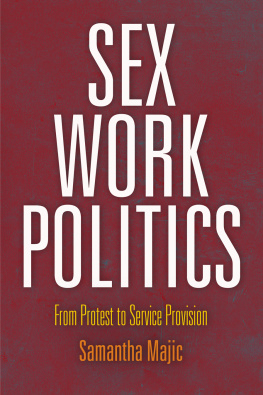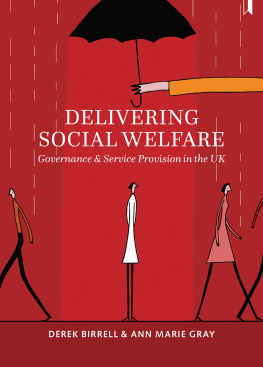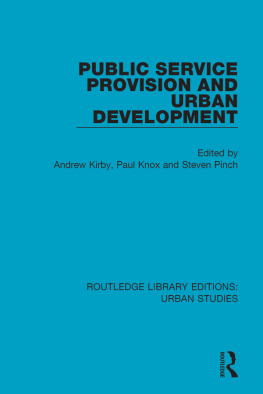Sex Work Politics
AMERICAN GOVERNANCE: POLITICS,
POLICY, AND PUBLIC LAW
Series Editors
Richard Valelly, Pamela Brandwein,
Marie Gottschalk, Christopher Howard
A complete list of books in the series
is available from the publisher.
Copyright 2014 University of Pennsylvania Press
All rights reserved. Except for brief quotations used
for purposes of review or scholarly citation, none of this
book may be reproduced in any form by any means without written
permission from the publisher.
Published by
University of Pennsylvania Press
Philadelphia, Pennsylvania 19104-4112
www.upenn.edu/pennpress
Printed in the United States of America
on acid-free paper
10 9 8 7 6 5 4 3 2 1
Library of Congress Cataloging-in-Publication Data
Majic, Samantha.
Sex work politics : from protest to service provision / Samantha Majic. First edition.
pages cm. (American governance: politics, policy, and public law)
Includes bibliographic references and index.
ISBN 978-0-8122-4563-9 (hardcover : alk. paper)
1. California Prostitutes Education Project. 2. St. James Infirmary. 3. Health facilitiesCaliforniaCase studies. 4. ProstitutesServices forCaliforniaCase studies. 5. ProstitutesPolitical activityCaliforniaCase studies. 6. ProstitutesHealth and HygieneCaliforniaCase studies. 7. AIDS (Disease)CaliforniaPreventionCase studies. 8. ProstitutionCalifornia. 9. Nonprofit organizationsCaliforniaCase studies. 10. Social actionCaliforniaCase studies. I. Title. II. Series: American governance.
RA643.6.C2M35 2014
362.1969792009794dc23
2013036900
CHAPTER 1
Institutional Negotiation: Sex Workers and the Process of Resistance Maintenance
One afternoon, in the fall of 2006, I sat across from Tasha in the Oakland office of the California Prostitutes Education Project (CAL-PEP), an organization that offers HIV/AIDS prevention and education services to sex workers and members of other street-based populations, including persons recently released from prison, substance users, and parolees. When I first met Tashaa pleasant, soft-spoken African American woman in her early forties, dressed in a pale-blue pantsuit and with neatly cropped hairshe told me that when she was fifteen she dropped out of school, ran away from home, and started working in prostitution to support herself and her cocaine addiction. CAL-PEPs mobile HIV-testing van was present in the community where she worked; when she was in her thirties, they provided the test that confirmed she was HIV positive. Although Tasha no longer works as a prostitute, she did not express regret or a sense of victimization about her participation in prostitution. Instead, she stated, prostitution was a good thing for her because it meant she didnt ask for no handout. She went on to tell me that prostitution should be legal because then it would be less dangerous. Girls are dying out there, she said (Interview, 1 December 2006).
On another afternoon that fall, across the bay in San Francisco, I sat with Monica at the St. James Infirmary (SJI), the worlds only occupational health and safety clinic for sex workers (Interview, 24 October 2006). Monica, a Native American transgender woman in her late thirties, is a regular client here. Talkative, striking, and extremely confident, Monica told me how she worked as a street prostitute in San Francisco for ten years. Like Tasha, she also spoke openly to me about how she struggled with substance abuse and worked as a prostitute until she discovered she was HIV positive. Despite having experienced these challenges, she also expressed no sense of victimization or regret about her work in the sex industry. Instead, she explained, Prostitution should be legalized to let girls make money to survive because its hard enough to make money as a trans [gender person]: sex work is the only way sometimes. She then told me about the banner in the SJIs community room that reads Outlaw Poverty, Not Prostitutes. She thought the SJIs staff and clients should take it to a rally.
As I listened to Tashas and Monicas stories, I was struck by how openly they referred to and supported legally recognizing prostitution as work. After all, despite their location in one of the more sexually liberal regions of the country, they are still in the United Statesthe only Western industrialized nation that almost universally criminalizes prostitution (Jolin 1994) and one where the mainstream media is replete with stories of prostitution involving coercion, violence, and human trafficking. Yet at CAL-PEP and the SJI, persons like Tasha and Monica, who participate in prostitution and other forms of sex work, not only receive free, nonjudgmental health services, but express views of prostitution that oppose mainstream conceptions of it and support efforts to change how society views sex workers. These organizations therefore raise the following broad question I explore in this book: how did they develop and sustain themselves as spaces that offer services
















